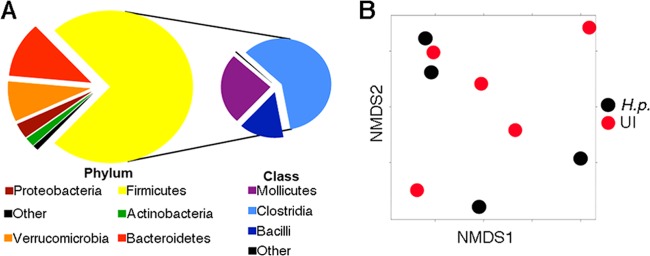Fig 2.

The murine stomach microbiota is refractory to H. pylori-triggered perturbations and similar to the human stomach microbiota. (A) Pie charts depicting phylum and class level distribution of 2,056 taxa that were present in all noninfected TF mice; 74% of the 2,056 taxa are Firmicutes, and, specifically, 44% of the total are members of the class Clostridia. A total of 12,032 taxa were present in at least one of five mouse stomachs. (B) Significant differences in microbiotas are not apparent between H. pylori-infected and noninfected samples, as indicated by nonmetric multidimensional scaling (NMDS) based on the Bray-Curtis distance between samples given the presence/absence of 12,032 taxa present in at least one of nine mouse samples; each dot represents one mouse in the study. H.p., 4-week H. pylori infection; UI, uninfected.
